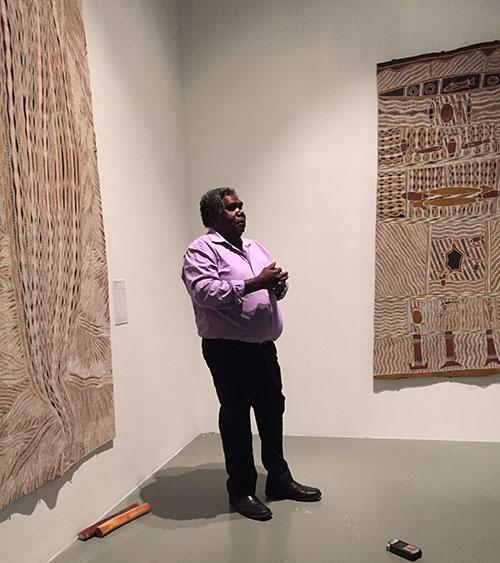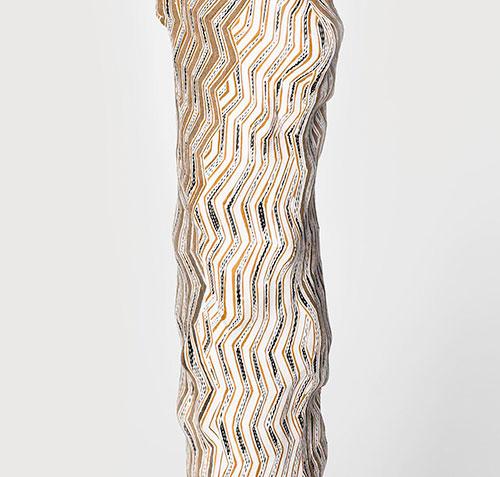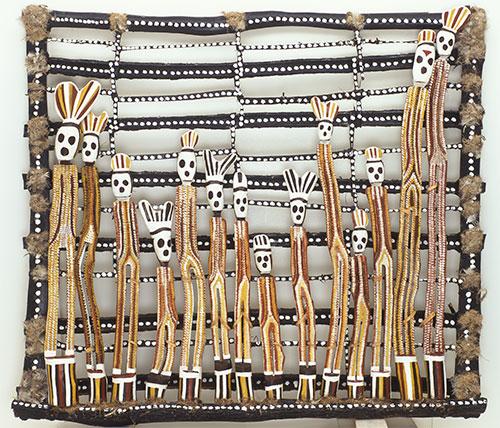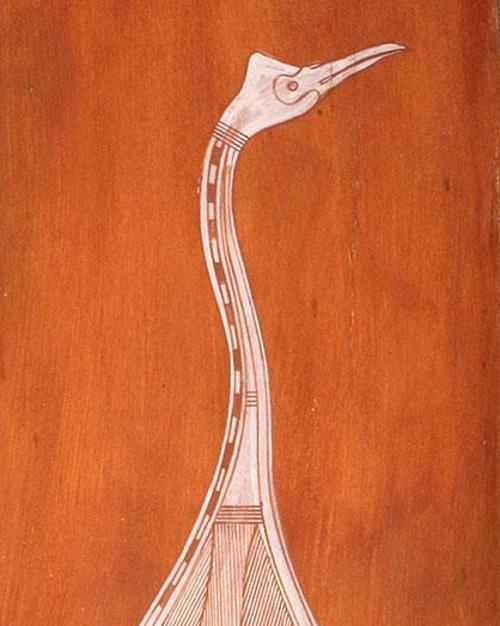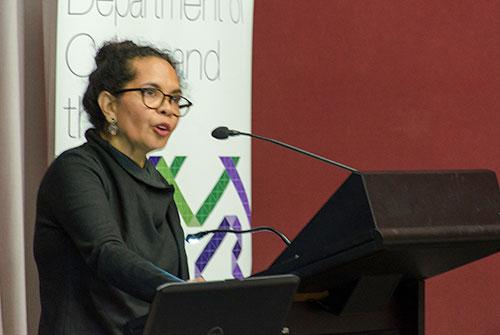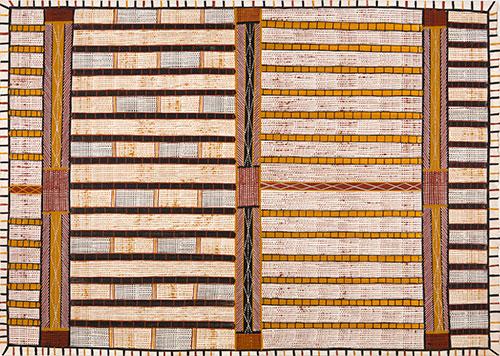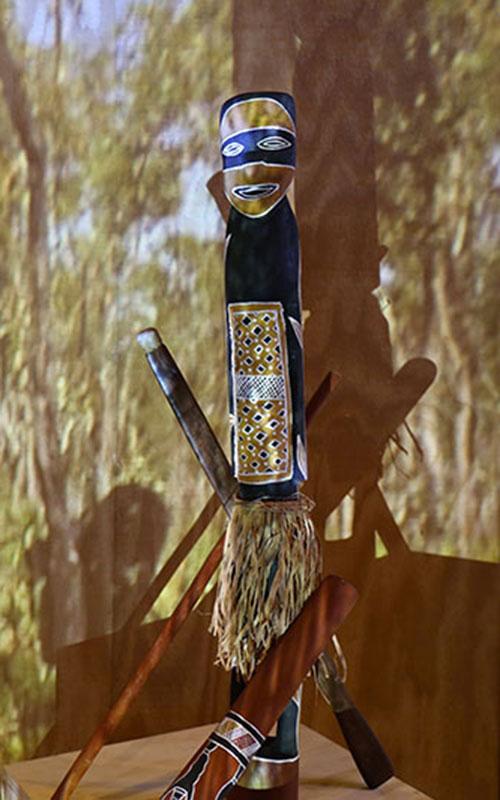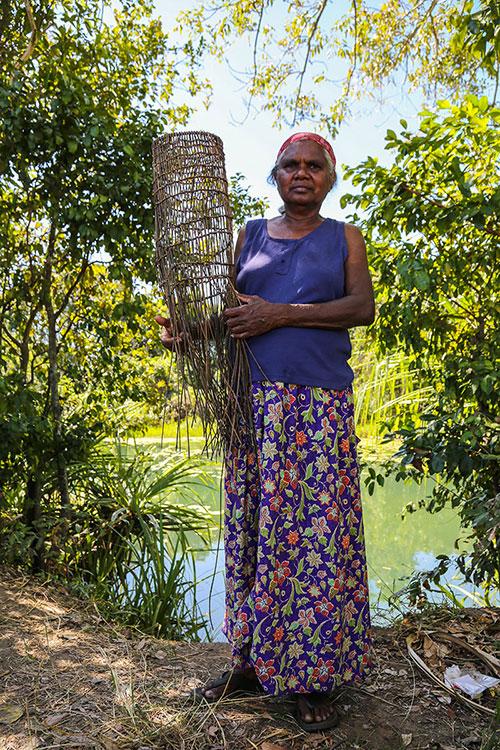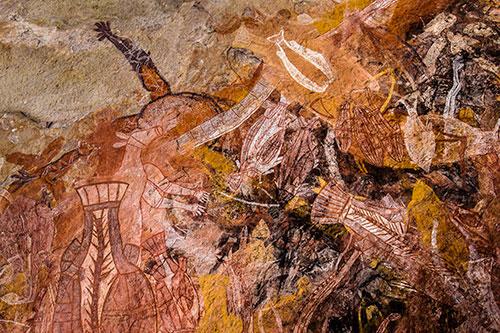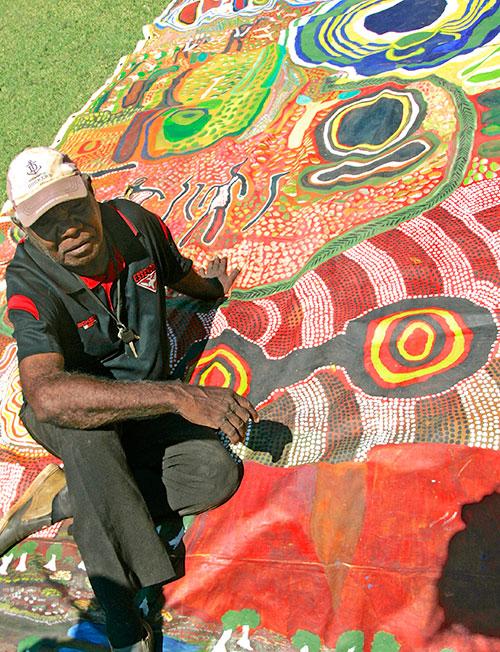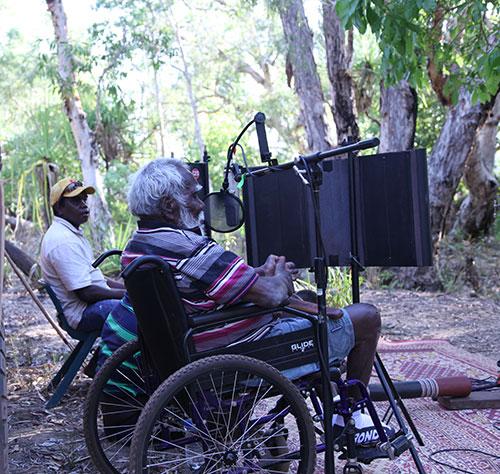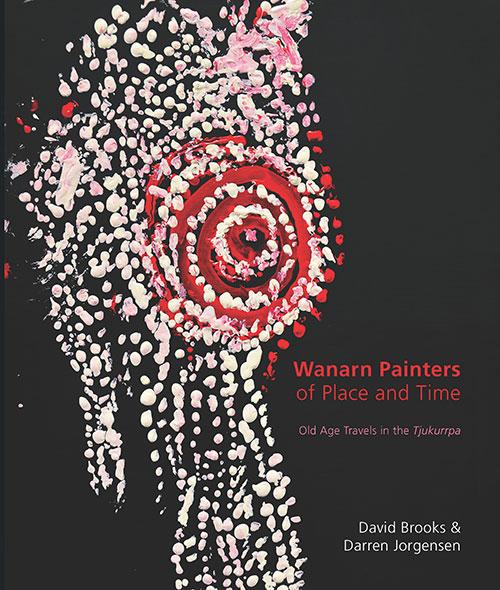Design on country
Beginning with batik printing at Ernabella in the APY Lands in the 1940s, hand-printed textiles in Indigenous art centres have become a rich and varied tradition. It has emerged as a significant art form in recent years, particularly for art centres in the Top End.
The Tiwi Islands has one of the longest traditions, where the Bima Wear women’s centre has been printing and designing since 1969, alongside Tiwi Design and the Pirlangimpi Women’s Centre. Tiwi textiles are known for their bright colours and bold designs, and are often worn by the local community.

